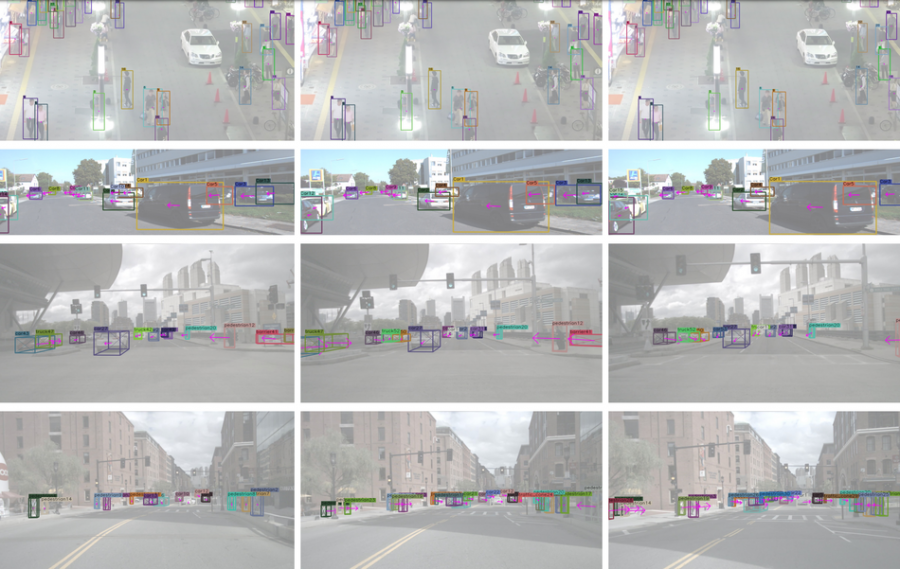
Researchers from the University of Texas, Austin and Intel Labs have released a new state-of-the-art object tracking method that tracks objects simply as points.
The novel method is able to perform online, real-time tracking in a different manner than existing methods, most of which use the common tracking-by-detection paradigm. Current state-of-the-art methods rely on pipelines that involve detection followed by (rather complex) temporal association.
In their recent paper, researchers propose a different way of tracking objects, namely tracking objects by simply tracking points in 2D. The method called CenterTrack takes an input image, and a pair of image and detections from the previous timestep to localize all objects present in the image and provide their temporal associations across frames. The detections are given as center points or more specifically, center detection heatmaps and the predictions of the network are given as the same kind of detection heatmap coupled with a bounding box size map and an offset map.
The method was evaluated using three different datasets: MOT17, KITTI Tracking benchmark dataset, and nuScenes. According to researchers, CenterTrack achieves state-of-the-art performance on both MOT17 and KITTI datasets with 67.3 % MOTA and 89.4% MOTA, respectively. The reported scores are computed for frame-rate of 22 and 15 FPS, making CenterTrack a real-time tracking method.


Researchers mention that the method can easily be extended to monocular 3D object tracking, multi-category object tracking as well as pose tracking. The implementation of the method was open-sourced and is available on Github along with the pre-trained models. The paper was published on arxiv.